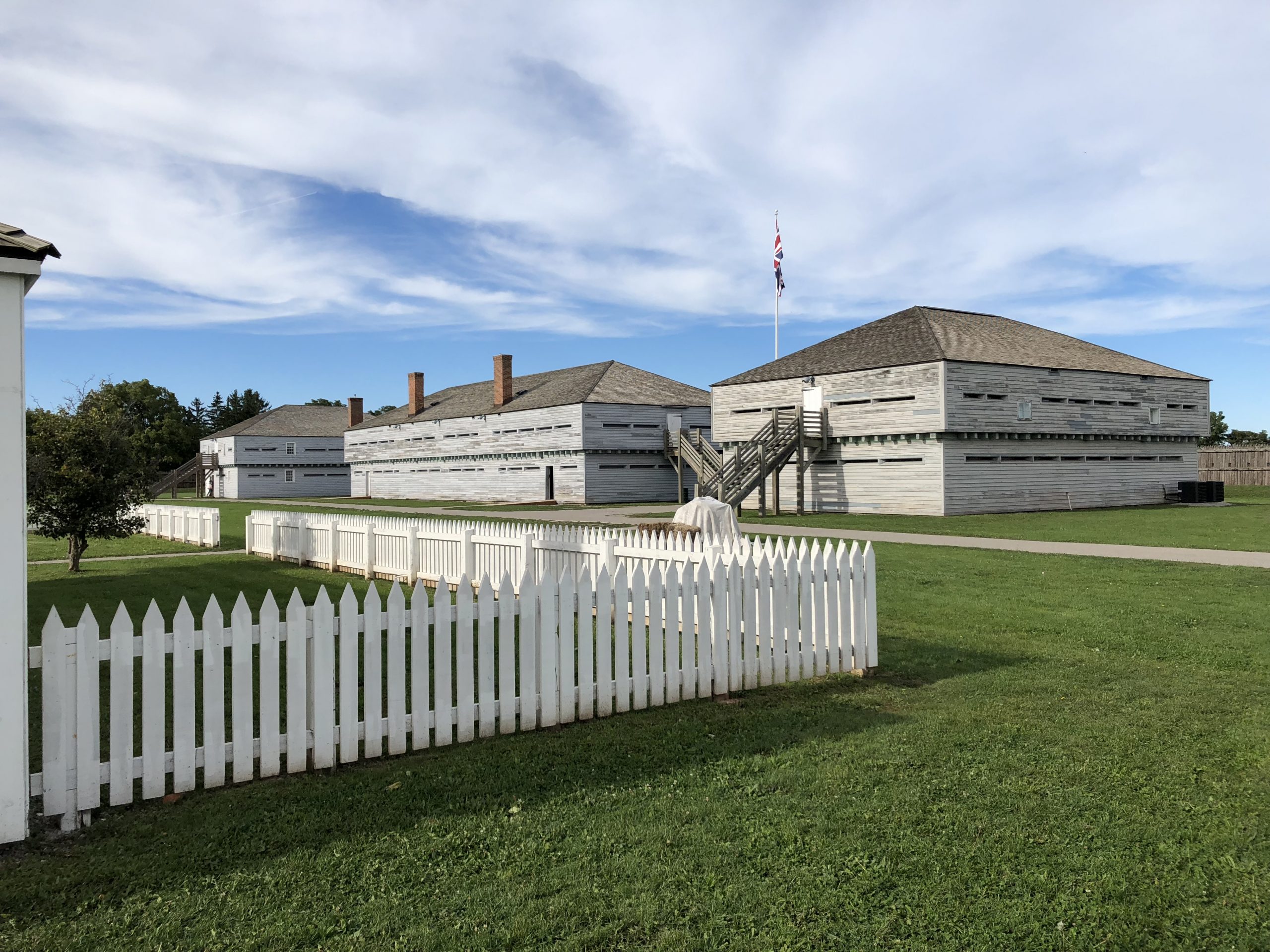
Built by the British in 1796-1799, Fort George in Niagara-on-the-Lake, Ont., was designated a national historic site in 1921. Officers had their own quarters, while other ranks and their families lived in blockhouses. [Wikimedia/Maksim Sokolov]
The British wanted a fort on the west side of the Niagara River, in what today is Niagara-on-the-Lake, to counterbalance Fort Niagara on the east bank and safeguard shipping on the river to Upper Canada.
Fort George was completed in 1802; its strategic importance recognized as war clouds gathered. It became headquarters for the British army during the War of 1812.
Sir Isaac Brock served there and was initially buried in the fort after he was killed in the Battle of Queenston Heights on Oct. 13, 1812.
In early 1813, the fort became a target for the Americans, who wished to establish a toehold from which they could invade Upper Canada. On May 25, furious bombardment from Fort Niagara and warships on the Niagara River destroyed nearly every building in Fort George.
An invasion two days later was followed by a pitched battle at Niagara. Outnumbered by about four to one and keenly aware of an attempt at a pincer movement to trap them, the British fell back, having suffered as many as 400 casualties. After spiking their guns and destroying their ammunition, the British retreated to fight another day, with more success to come at the battles of Stoney Creek and Beaver Dams.
The Americans were doomed to hold Fort George for only seven months, their invasion plans evaporating with defeats in battle.
In December 1813, the Americans retreated, destroying the town of Niagara when they left, burning 130 houses and leaving hundreds of residents—children, women and the elderly—homeless in the cold of winter.
The British moved back in, rebuilding some of the structures, but Fort George did not have a long life after the war. The British moved on to more strategic locations in the 1820s.
But Fort George was to have a second life. It was declared a national historic site in 1921 and was restored to its pre-1812 state in the 1930s by the Royal Engineers.
Today it is a living history site, used for historical education and for tourism, with demonstrations of life prior to 1812 performed by staff in period costume.
In previous years, the battle has been re-enacted by history buffs who come from across the United States and Canada.
Advertisement





















